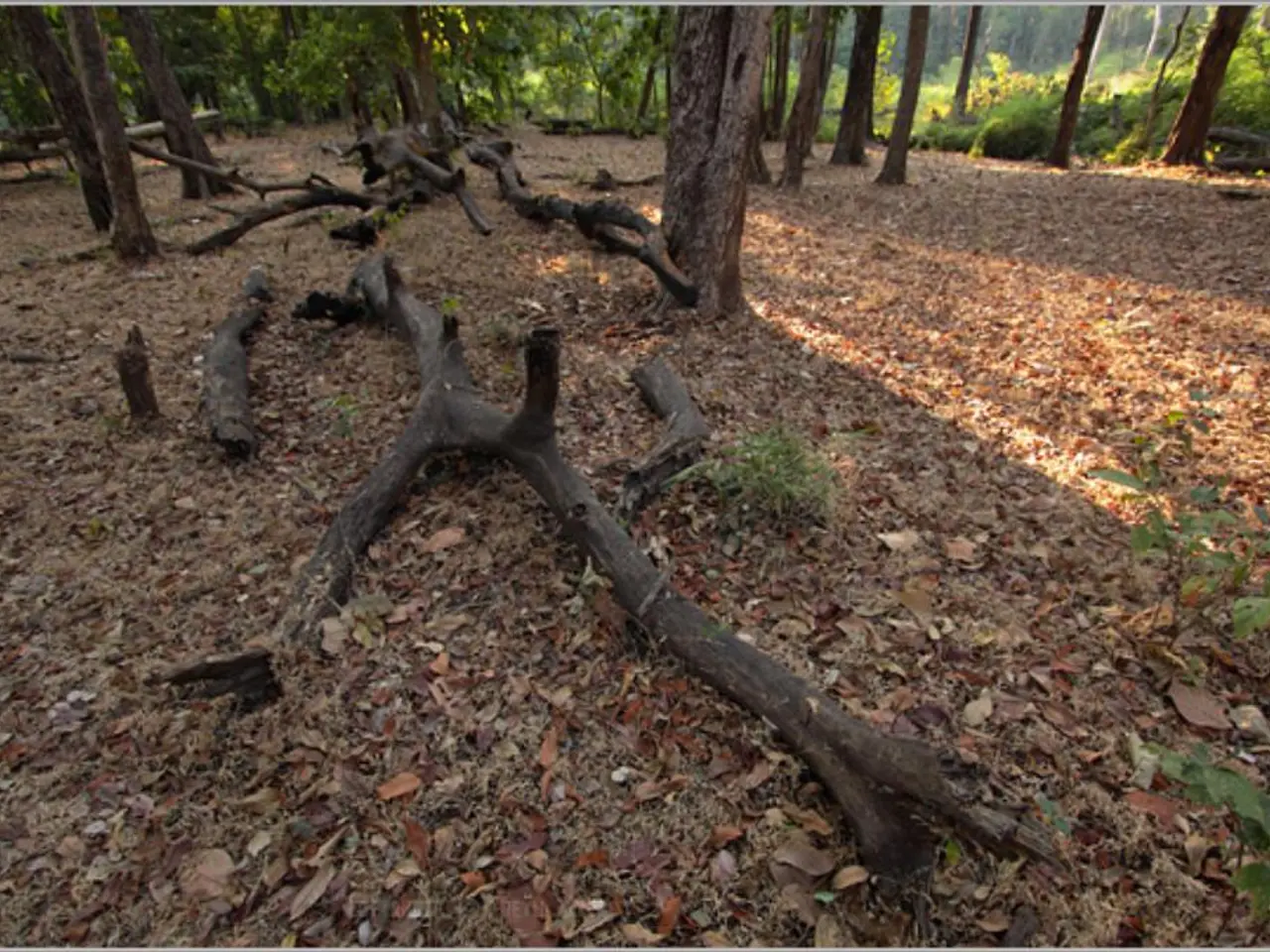Researchers Discover Fig Trees' Capacity to Transform Carbon Dioxide into Limestone
Fig trees native to Kenya, such as Ficus wakefieldii, Ficus natalensis, and Ficus glumosa, have a remarkable ability to convert carbon dioxide into calcium carbonate, a discovery that could help slow climate change. Researchers are focusing on the water requirements and fruit yields of these trees to assess their suitability for agroforestry, a land management practice that integrates trees with crops and livestock.
The calcium carbonate formed within the fig trees and their surrounding soil has the potential to provide an additional benefit by sequestering inorganic carbon in the form of calcium carbonate. This carbon sequestration process, which uses the oxalate-carbonate pathway, has not been fully considered until now.
One of the researchers focusing on this discovery is Dr. Mike Rowley, a senior lecturer at the University of Zurich. He and his team believe that inorganic carbon is being sequestered more deeply within the wood of fig trees than previously realized. The calcium carbonate remains trapped in soil longer than organic carbon, making it a more durable and long-lasting carbon sink.
The soil around the fig tree becomes more alkaline as calcium carbonate is formed, which enhances nutrient availability and potentially leads to healthier soils and better growing conditions for other plants and soil organisms. Moreover, fig trees produce calcium carbonate deposits in the soil, aiding in the improvement of soil pH and reducing soil acidity.
As fruit-bearing trees, figs provide food resources alongside climate mitigation benefits, offering a triple win—food production, organic carbon storage, and durable inorganic carbon sequestration. The long-term carbon locking achieved through calcium carbonate formation within the tree’s wood and nearby soil avoids the quick release of CO2 typical in conventional biological carbon pools.
Fig trees are identified as a potential candidate for agroforestry due to their unique carbon-to-stone sequestration process. They are suitable candidates for agroforestry systems because they combine economic and ecological benefits. Their ability to produce fruit supports livelihoods and food security, while their unique carbon sequestration process enhances the climate mitigation capacity of agroforestry projects.
Ongoing research is assessing the specific water needs and adaptability of fig trees to ensure that large-scale agroforestry or reforestation projects can effectively utilize these species for carbon capture in various environments. Researchers are hopeful that this discovery could be beneficial for agroforestry, as it could provide an additional benefit by sequestering inorganic carbon in the form of calcium carbonate.
In addition to the Kenyan fig trees, other tree species, such as Iroko trees (Milicia excelsa), also have the ability to sequester calcium carbonate in the soil. By understanding and harnessing the carbon sequestration potential of various tree species, researchers aim to develop agroforestry practices that can contribute significantly to global efforts to mitigate climate change.
- The unique carbon sequestration process of fig trees, as they form calcium carbonate within their wood and soil, has not been fully explored until now, and it could potentially be a valuable asset in environmental-science, particularly in the context of climate-change mitigation.
- As researchers delve deeper into the carbon sequestration potential of fig trees, they are also investigating the water requirements and adaptability of these trees for various environments, which could lead to significant contributions to health-and-wellness through improved soil conditions and food production.
- Beyond fig trees, other tree species like Iroko trees also have the capability to sequester calcium carbonate in the soil, opening up opportunities for diverse agroforestry practices that can tap into the power of science and history to create sustainable ecosystems for fitness-and-exercise, food production, and overall health-and-wellness.




